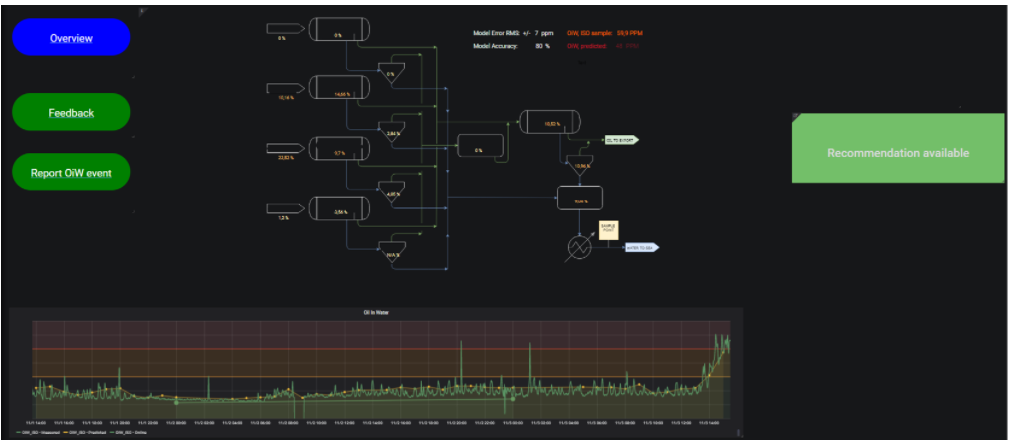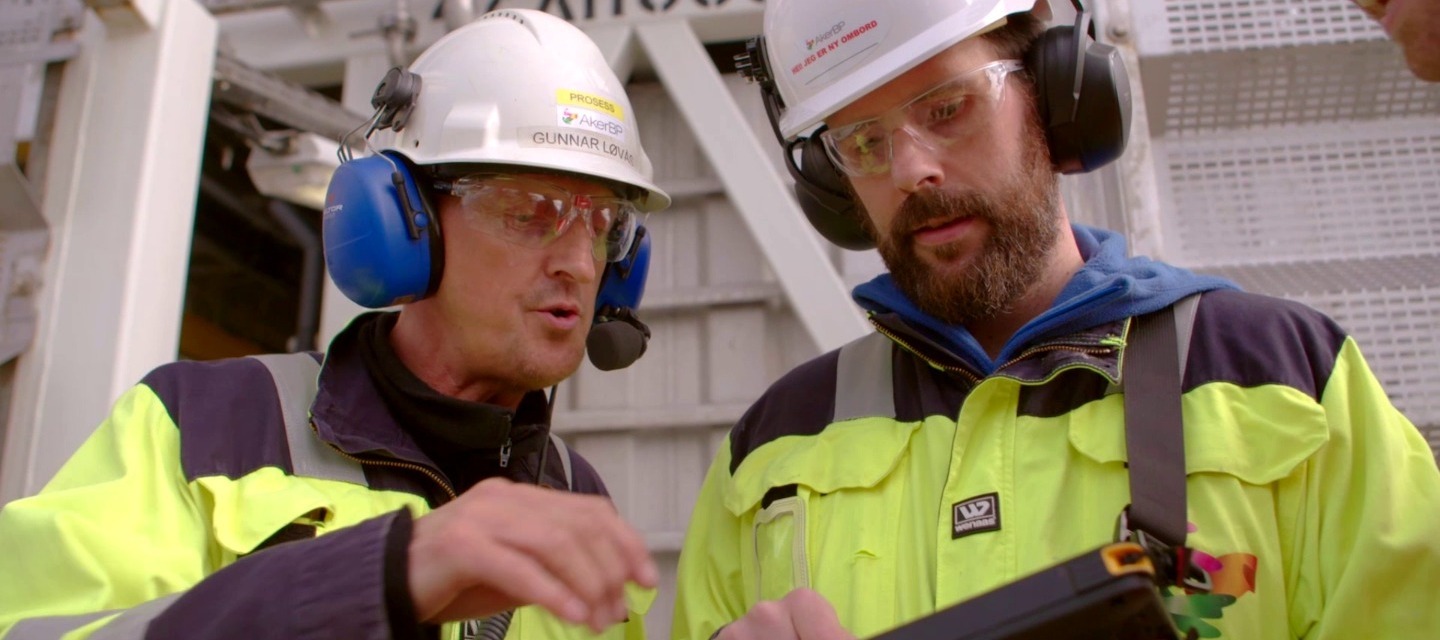IN SHORT
Aker BP and Cognite are working on combining machine learning with physics and domain knowledge to improve water contamination detection.
Aker BP and Expert Analytics used Industrial DataOps provided by Cognite, including Cognite Data Fusion™ and its connectivity with leading low-code frameworks, to help Aker BP comply with regulations on oil in water and reduce production losses.
-
$6 million in estimated annual savings and reduced production losses
-
Reduces time needed to identify bad actors behind high oil-in-water levels
-
Secures regulatory compliance and prevents environmental incidents
CHALLENGE
How Aker BP is taking a hybrid
machine learning approach to optimizing production
Produced water disposal is one of many challenges at oil and gas facilities with high water-cut wells. Keeping the oil contamination level in the produced water below environmental limits requires an efficient separation process. Obtaining produced water that meets environmental regulations requires an efficient separation process, which is governed by a series of complex physical interactions.
Significant production losses are associated with situations with high oil-in-water levels, because safely discharging water to the sea requires slowing down production while troubleshooting for worst actors at the facility.
To identify what could be causing high oil-in-water concentration, operators often take spot sample measurements at different parts of the production facility and then perform mitigating actions once the bad actor is located.
Operators rarely have much information to determine where to start the search, however, which can make finding the bad actor a time-consuming process.

SOLUTION
The solution will save Aker BP an estimated $6 million a year and reduce the company's environmental impact
Aker BP, Expert Analytics, and Cognite have implemented a smart monitoring system that visualizes all data relevant for troubleshooting water contamination and a recommender system with an underlying machine learning model to identify worst actors related to high oil-in-water concentrations.
The smart monitoring system displays near real-time data from Cognite Data Fusion™, visualizing it in an intuitive Grafana dashboard. Additionally, calculations combining sensor values and simulator outputs provide engineers with virtual sensors and physical properties they otherwise would not have had readily available.
The recommender system is based on a machine learning model fed with data from Cognite Data Fusion™. The model, which is trained to predict oil-in-water concentrations based on historical data from approximately 200 physical sensors from production wells and equipment relevant to produced water, determines an importance associated with each parameter or property in the production facility. This in turn can be used to identify worst actors related to water contamination.
In addition to the 200 physical sensor values, the model is also fed values from approximately 100 virtual sensors. One example is how data from pressure and temperature sensors is converted to fluid properties by applying the laws of thermodynamics and information about the fluid composition. Finally, the model also considers virtual sensor values obtained from multiphase flow simulators such as flow rates from individual wells.
IMPACT
The smart monitoring systems gives engineers the ability to troubleshoot issues related to water contamination in a single dashboard, increasing their situational awareness.
This allows users to take informed actions based on the available data and solve problems faster. When the proposed recommender system is in place, it will be an integral part of the monitoring system that will highlight which parts of the production facilities may be important to the current oil-in-water concentration.
This serves as a starting point for investigating the problem, and is a significantly faster approach to identifying mitigating actions related to water contamination. Aker BP estimates that decreasing the time spent finding mitigating actions has an annual revenue potential of $6 million. The system could also have a net positive environmental impact.


 Check the
documentation
Check the
documentation Ask the
Community
Ask the
Community Take a look
at
Academy
Take a look
at
Academy Cognite
Status
Page
Cognite
Status
Page Contact
Cognite Support
Contact
Cognite Support


